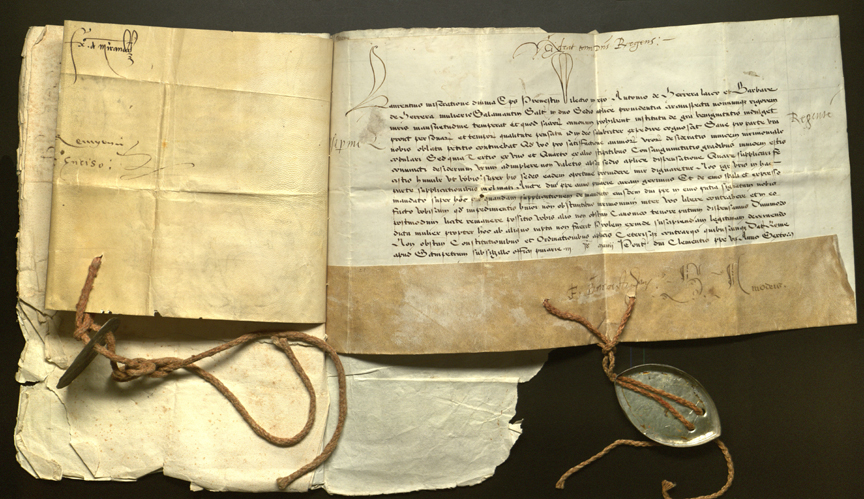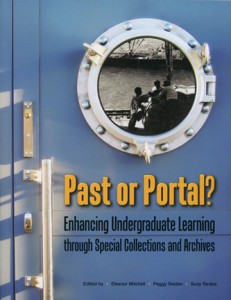Papal Bull of Clement VII
Bryn Mawr’s Special Collections hold a number of remarkable medieval and early modern manuscript pages that are currently cataloged only in paper records. In order to make these documents and their unique information available to scholars and researchers, we have expanded our efforts to add information about these materials to our online resources. The records will include high quality digital images of these manuscripts. These images will not only allow researchers to view the manuscripts in their entirety, but also ensure the information in them survives in the event that they deteriorate further, or become lost or destroyed in the future.
Since January, we have cataloged a wide range of single page and other short manuscripts which are diverse with respect to their provenance, date, language, and content. The earliest manuscripts that we have, though few, are not even medieval – they are Greek papyrus fragments which date to the 1st and 2nd century CE, and likely come from Egypt. In a collection of fifty-nine medieval manuscripts donated by Sigmund Harrison in the 1980’s, we have pages of religious texts such as breviaries, missals, and copies of the bible. These are written in Latin and are dated from the 11th century CE to the 16th century. Additionally, the Harrison collection contains a medical text on the common cold written in Latin, a liturgical calendar with the names of local saints, a page from a German accounting book, four pages from an Italian accounting book index, and French legal documents.
Currently we are cataloguing manuscripts in the Felix J. Usis collection. Six papal bulls comprise only a part of this extraordinary collection. A papal bull, a legal document issued by a pope, is named after the bulla by which the document is sealed. Originally, bullae were made of clay or wax, but in time, the definition was extended to refer to pendent metal seals.
Two of these papal bulls date to 1529 CE and were issued by Pope Clement VII (born Giulio de’ Medici). Clement VII, known for refusing to annul King Henry VIII’s marriage to Queen Catherine, here played a role in the marriage of another couple. This time, however, his permission to marry was requested and granted. The documents connected with the two papal bulls suggest that a local clergyman wrote to the pope on behalf of Antonio de Herrera and Barbara de Herrera to see if it would be alright if they married one another. Why did they need permission? They were cousins.
The papal bull contains Clement’s response. Typically it was not permitted for blood relations to be united (copulari) in marriage. In this case, however, the cousins were related only in the third and fourth steps of blood relation (tertio…et quarto…consanguinitatis gradibus). Therefore, these two de Herreras might marry one another. The Pope added that anyone petitioning him for a similar reason should receive the same answer.
Jennifer Hoit


